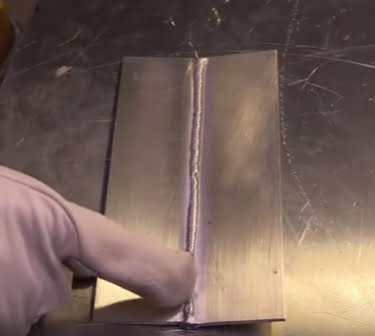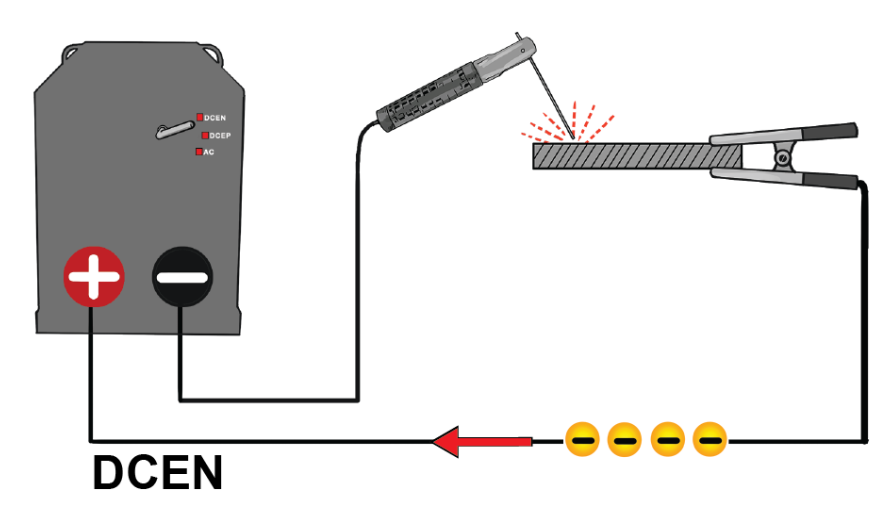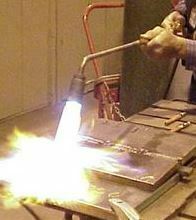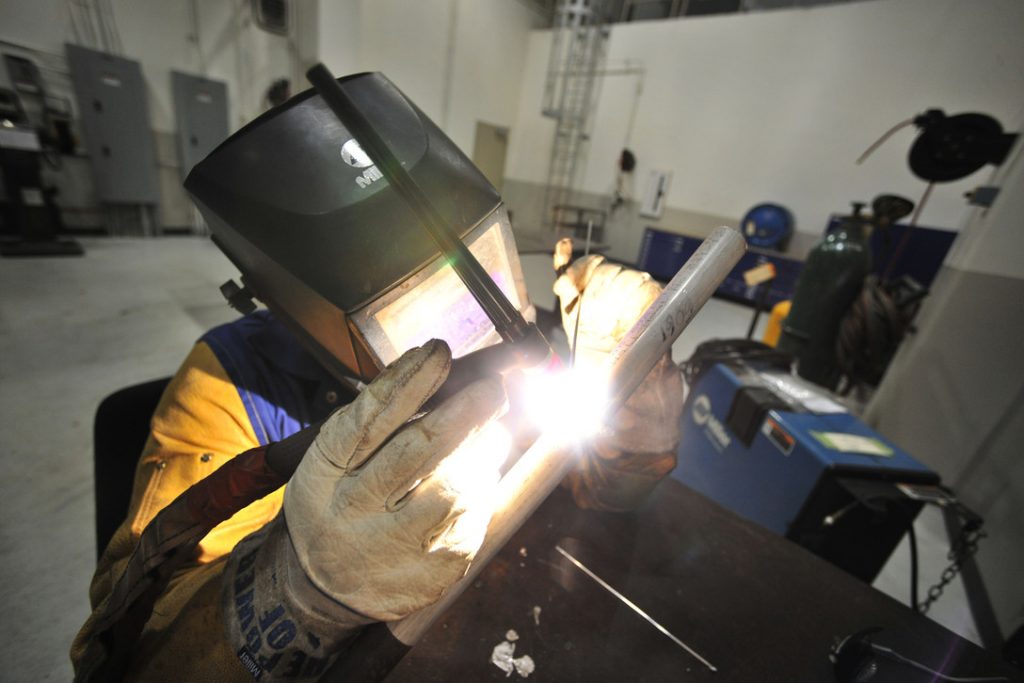TIG welding aluminum can seem like a difficult task. You've mastered all kinds of welding techniques with thicker and more resilient metals, but aluminum seems difficult. However, you've heard it's the best option for weld projects in a lot of automotive and maritime choices, and really want to learn to be an aluminum TIG welder.
Table of Contents
Key Takeaways
- TIG welds have high integrity and beautiful appearances when welding aluminum
- Setting the right balance control will contribute to a solid aluminum weld
- For aluminum GTAW welding , use 1 amp per thousandth (.0001) of metal thickness
- We recommended tungsten electrodes for TIG welding aluminum in this article
- Make sure that you clean your base material thoroughly before you begin your weld
Want to know how to TIG weld aluminum? Whether you're looking for the right gas for TIG welding aluminum or the best way to weld aluminum, our article can help. We have compiled the most extensive list of tips for welders who want to TIG weld aluminum, from the best TIG welder and aluminum welding rods to the right settings for the job.
By the end of this article, you will be fully informed on TIG welding and ready to grab your aluminum TIG filler rod and get started! You will be able to prepare the aluminum, configure your settings, and begin your project with the right speed, gas, and technique!
Although it's difficult to weld with aluminum, it is extremely useful to learn to do so. Using aluminum in manufacturing and welding will reduce the weight, extend the lifespan of welds, and offer more resilience and durability in cold temperatures.
TIG Weld Aluminum – Overcoming Challenges with GTAW
As we thoroughly covered in our TIG Welding For Beginners article, GTAW (gas tungsten arc welding) is a really slow process that is rarely used in manufacturing when productivity rate is of huge importance, but it’s a great option for aluminum because productivity here is less important than weld quality and appearance.
This process can be challenging. It is critical to maintain proper heat input and eliminate the oxide layer. GTAW welds have high integrity and beautiful appearances, so they are most commonly used for this process.
When you use gas metal arc welding (GMAW), for MIG welding aluminum, the filler metal gets fed into your weld puddle the second that you squeeze your gun's trigger. These are called cold starts, and unfortunately, they may lead to insufficient penetration and a lack of fusion and cohesiveness in your weld even after you have mastered MIG welding basics.

With GTAW welding, you are in control of when the filler metal gets added to the weld and you can establish your puddle and ensure proper penetration before adding filler metal. This adds complication and requires greater skill than GMAW, but it results in a much better weld.
The welding heat is produced through voltage and amperage, which means that you get more power into your part when you have a higher arc voltage. Longer arcs will increase the arc voltage, and thus produce more heat, but these longer arcs also heat a larger surface area of your material. This created problems like runaway puddles. Using a smaller arc will localize the heat to a controllable area.
The 3 C’s – Clean Clean and Clean

Make sure that you clean your base material thoroughly before you begin your weld. While this is always a good practice, when it comes to GTAW welds and aluminum as a base it is crucial.
Use a steel wire brush that has not been used on any other source materials to avoid cross-contamination and impurities. Clean each space of the filler metal until it has been stripped of impurities.
Clean each space of the metal until it has been stripped of impurities. Remember that aluminum will begin oxidizing instantly, so you must clean thoroughly but quickly and make a final pass over the material even when you have finished. During your weld, you may need to adjust your balance to clean peppering and oxide flakes so they don't contaminate your weld pool resulting in defects, or stop and reclean the rest of the material again.
Travel Speed
When it comes to aluminum welding, the important words to remember are fast and hot. Slow travel speed will lead to a lot of burn through and melt through on your material, especially if you're working with a thin gauge aluminum sheet as aluminum is a heat sink - it does get hot really fast .
Don’t Weave
Although weaving can be used with a lot of base metals, even in TIG welding, you do not want to weave with aluminum welds. Using the stringer bead technique is vastly superior. This will allow for better penetration and fuse the weld together more properly. Use higher heat inputs and travel quickly so you can stay in front of your puddle, especially in TIG welding aluminum.
Nozzle Size
The nozzle size is important when TIG aluminum welding. If your weld has too much porosity, then grab a gas lens or a larger cup. This will prevent contamination of your materials and improve your gas flow. We covered the basic parts and MIG vs TIG in a separate article.
Improve your TIG Welding Aluminum Skills With Our Tips
Here are some important things to keep in mind when it comes to welding aluminum using TIG method. Employing these techniques will hopefully improve your welds.
Use the Right Polarity when TIG Welding Aluminum
One of the things that new welders may not understand is that their material generates an oxide layer as they work, so even if they've cleaned the surface it will still be present.
Oxidation on aluminum will show up as a dull silver color, which will be more difficult to spot than traditional rust, or red oxidation, that shows up on steel welds.
Oxidation on aluminum will show up as a dull silver color, which will be more difficult to spot than traditional rust, or red oxidation, that shows up on steel welds.
The melting point of aluminum oxide is also 3 times greater than the melting temperature of your base material, which causes other complications as well.

When you clean the oxide layer with a stainless steel wire brush that has not been cross-contaminated with other welding material before beginning your project, you set yourself up for success. Despite this, the oxide layer will immediately begin to re-form the second you finish, so your view of your weld puddle can still be obstructed.
This means that you must use alternating current (AC) polarity when you use the GTAW process to weld aluminum. With this AC, the current flow will continuously change direction throughout your aluminum welding process. This polarity will clean the weld as you work, helping to remove the oxide layer that forms on the aluminum so you can see the molted pool for your weld.
Adjust the Balance Control
Setting the right balance control will also help contribute to a solid aluminum weld. When you use AC polarity, the weld has an electrode-negative (EN) cycle and an electrode-positive (EP) portion in that cycle. EN ( electrode-negative ) is the waveform side that handles the TIG welding and EP is the cleaning portion that helps remove oxide. With modern welding tools, the balance control feature will let you adjust your ratio between the t2 wavelength sides based on how your weld puddle looks and how bad the oxidation becomes during your process.

Older equipment tends to be a 50-50 balance of EN and EP, but more modern GTAW power sources have a factory preset balance that is closer to 75 percent EN and 25 percent EP. If you begin seeing small black flecks around your weld puddle while you work (often known as peppering) your balance control needs to be adjusted.
Turning the balance down, resulting in more EP than EN, will help to remove the oxide during your welding and reduce the appearance of these peppering flakes.
When you lower the EN to allow for greater cleaning action, you are also putting most of the heat on the tungsten. This can cause the tungsten tip to ball backward and affect your control over the direction of your arc and placement of your weld. This may be a necessary action when you are working with material that has been exposed to the elements or is scrap from parts that have already been in service. These project base materials will have very thick oxide layers that can't get completely removed during material preparation.
As a final note, adjusting the balance control will not replace the need for preparing your base material properly and cleaning it thoroughly when you are welding aluminum. Because aluminum continually oxidizes, you will simply be able to control it without stopping everything to clean every few minutes.
Set the AC Output Frequency
Another important thing to keep in mind for easier weld placement is the AC ( alternating current ) output frequency. This frequency can be adjusted and set on modern welding power sources. This AC output frequency is not the same thing as a high-frequency arc starting.
This output frequency is a reference to how many times the power source switches polarity each second. Older GTAW power sources are around 60 Hertz, which the input power predetermines. The modern equipment will all come with a factory preset of 120 Hertz of the output frequency.
The higher the AC output frequency, the more stability an arc contains. This will result in a narrower, tighter arc column that will offer more control over directional welding. This means you will be able to easily weld in tighter spaces and get greater precision without the wandering arc.
When you lower the AC output frequency, you will end up with a wider arc cone. This can be helpful if you're welding outside corner joints. Using a higher output frequency somewhere between 150 to 250 Hertz on thinner materials that need accurate weld placements can prevent heating too large an area and burning through your base material. For thicker materials, use a low AC frequency between 80 to 120 Hertz. This will help you with a wider weld bead profile.
Is Preheating Aluminum Before Welding Necessary?
In general, preheat is rarely, if ever, needed to weld aluminum alloys. If you want to preheat, the temperature should be limited to 200 degrees F maximum which can be useful to drive off condensation and moisture.
With aluminum, you want to preheat somewhere between 100 and 200 degrees. Your material's temperature shouldn't get above 230 degrees Fahrenheit. Placing tack welds at the start and finish of your TIG welding area will help the process of preheating your base.

Use Appropriate TIG Welder Amperage
In GTAW welding, amperage uses a foot pedal or fingertip control point, but setting the appropriate maximum amperage on your equipment is still important. The general guideline for aluminum GTAW welding is to use 1 amp per thousandth (.0001) of metal thickness. Essentially, a 1/8 inch material will use 125 amps. If your base metal exceeds ¼ inch in thickness, then the general guideline no longer holds true. You won't need as much increased amperage per thickness. So a 3/8-inch material will only need a 280-ampere power source.
The shape and geometry of your joint can also affect how much amperage you will need for your weld. If you're tackling a T-joint project, the heat input can flow in 3 different directions. With a butt joint, the heat can only go in 2 directions. This means you need more heat input for T-joint welds.
Set AC Amperage Independently
Some power sources will allow you to independently determine the AC amperage. This can offer greater productivity and more penetration. This will also allow you to increase the amperage during your EN cycle for maximized penetration in your weld.
Usually, this feature is utilized in high amperage applications. Setting the AC amperage independently will also prevent the need to increase your tungsten size because most of your heat will be placed on the tungsten during the EP cycle rather than the EN cycle. The right technology will allow you to tailor your amperage for the best results.
Although this sounds similar to the balance control, they control 2 completely different aspects of TIG welding. Adjusting the balance control will only affect the level of cleaning performed on the oxides. Adjusting the AC amperage provides deeper penetration without affecting the geometry of the tungsten.
Electrode Choice for Aluminum TIG Welding
The TIG welding aluminum process requires the use of tungsten electrodes. Older machines used pure tungsten, but these days inverters can handle 2% ceriated or lanthanated instead.
Most used tungsten electrodes for TIG welding aluminum are as follows:
- Orange: 2% ceriated (use on AC)
- Blue: 2% lanthanated (use on AC and DC)
- Gold 1.5 lanthanated (use on AC and DC)
- Red: 2% thoriated (use on DC only)
- Green: pure tungsten (use on DC only)
Add Filler Metal for the Stacked-Dimes Look
If you want the beautiful stacked-dimes look when you’re doing aluminum GTAW welds, then you can add filler metal. Because this filler metal is a solid that is being turned into molten liquid, it needs energy. The energy changes the material state, similar to adding ice cubes to hot water. The ice cubes will melt but they also make the water cooler in the process.
This idea applies to filler metal in GTAW welds. Adding additional aluminum weld filler rods will cause the backside of your weld puddle to cool down, which produces the stacked-dimes look in a completed weld. Adding a little more filler metal with each dab will produce a pronounced appearance, and adding less material will create a smooth appearance on finished welds.
You don’t need to do this for the stacked-dime look, but some welders like using their foot pedal to vary the amperage. This can also create stacked-dimes looks in TIG welding. The filler metal technique is simply the easiest of these methods to master for beginners.
Finally, here’s a great TIG welding aluminum video:
FAQs
1. Can I weld aluminum with a TIG welder?
For aluminum welding, GTAW (TIG) and GMAW are typically employed (MIG). Because TIG provides for better outcomes on lighter gauge materials, the majority of welders in the industry agree that it is the preferable option for welding aluminum. TIG welding aluminum can result in high-quality welds when done properly.
2. Do you TIG weld aluminum on AC or DC?
While AC is used for TIG welding aluminum, DC is used to weld mild steel and stainless steel. Depending on the kind of connection, the TIG welding aluminum method offers three different welding current options. Each connection technique has benefits and drawbacks.
3. How hard is it to weld aluminum with TIG?
Even with a more straightforward TIG welder like the Eastwood TIG 200 AC/DC, TIG welding aluminum can be more challenging than TIG welding steel. There are certain easy actions you can take before, during, and after the weld to help you properly weld aluminum because it is less forgiving than other filler metals.
4. Can I weld aluminum without gas?
No, you cannot TIG weld without gas. To shield the weld pool and tungsten electrode from oxygen, gas is necessary. Most TIG Welder torches also use gas to cool them, therefore not utilizing gas would put the TIG torch at risk of burning out.
5. What gas do you need to weld aluminum?
Helium or argon can be used as the TIG welding gas for aluminum. You can utilize these two gasses separately or together. The most common type is pure argon.
